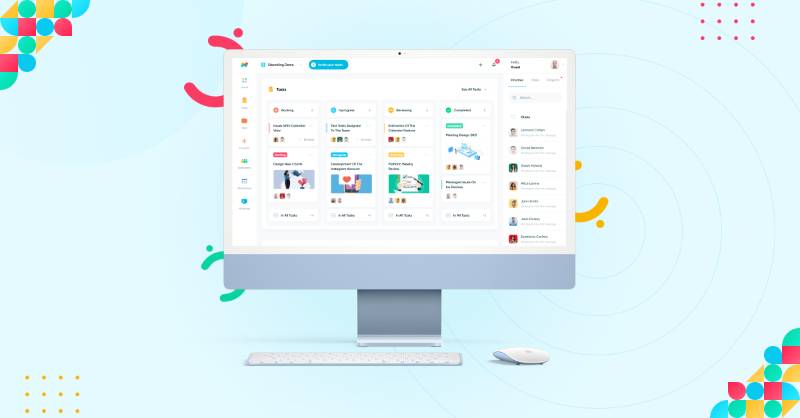In the modern-day, driven by digital transformation, sales teams are constantly seeking ways to optimize their processes. But what is the golden ticket to sales success? It's the ability to convert a hot lead into a committed customer. In sales terminology, a hot lead is a potential customer who is ready to purchase, needing a small push to cross the finish line. But, how can you effectively convert hot leads and turn them into loyal customers? Let's take a deep dive into this topic.

 The Essence of a Hot Lead
The Essence of a Hot Lead
The primary difference between a hot lead and a lukewarm or cold lead is the level of interest, readiness, and qualification. A hot lead displays high interest in your product or service, has an immediate need or desire, and, most importantly, the budget to make a purchase. They're primed for action and represent a promising opportunity for sales. However, even with these leads, successful conversion isn't guaranteed—it requires a strategic and well-thought-out approach.
Defining Hot Leads
High Interest Level
Hot leads have shown high interest in your product or service. They may have visited your website several times, downloaded your resources, interacted with your team, or asked detailed questions. It's essential to recognize these behavioral cues and respond promptly, providing them with the necessary information to make a purchase decision.
Understanding the lead’s interest is not dissimilar to creating an effective document management workflow; both require a clear understanding of the needs, steps, and tasks involved. Just like using an effective document management workflow to streamline your operations, correctly identifying hot leads streamlines the sales process and increases conversion rates.

Immediate Need or Desire
Hot leads have a clear and immediate need for your offering. This urgency makes them ready to make a buying decision and gives you the leverage to convert them. The key here is understanding their urgency and offering a timely solution.
Consider this as being similar to the concept of fast-tracking in project management. The urgent need for a solution necessitates a rapid response, just like when project managers use fast-tracking to compress the project schedule. In the same way, fast-tracking in project management accelerates project completion, responding quickly to hot leads accelerates the sales process.
Financial Readiness
Being financially ready is a crucial factor that separates hot leads from others. These leads have the budget to afford your product or service, removing financial constraints from the decision-making process. Your task is to convince them that your offering provides the best value for their investment.
Think of this aspect as setting realistic goals for a project. The budget is a critical factor in defining the project scope, just as it is in converting hot leads. By determining realistic goals for a project, we ensure its success, and by recognizing financially ready leads, we increase our chances of a successful sale.
 Aiding Sales Conversion with Edworking
Aiding Sales Conversion with Edworking

As we discuss converting hot leads effectively, it’s important to mention how digital tools, like Edworking, can assist in this process. Edworking is an all-in-one remote work platform designed to streamline task management, enhance communication, and facilitate collaboration.
Its Task Management feature, for instance, enables users to manage different stages of projects, create and assign tasks, and receive updates from remote teams. This functionality can be crucial in keeping track of interactions with hot leads and ensuring timely follow-ups. Furthermore, Edworking’s Docs feature allows sales teams to create, share, and collaborate on documents in real-time, ensuring seamless knowledge exchange and preparation for lead conversion. With its intuitive interface and versatile features, Edworking can be a valuable ally in converting hot leads into committed customers.
 Establishing Effective Communication
Establishing Effective Communication
One of the keys to successfully converting hot leads is effective communication. The goal is to foster a meaningful relationship with the lead by understanding their needs, addressing their concerns, and demonstrating the value of your offering.


Understanding Needs
It's essential to fully understand the lead's needs before attempting to make a sale. What problem are they trying to solve? How does your product or service fit into their solution? Engage them in conversation to uncover these insights and position your offering as the best solution.
This approach aligns with the concept of defining tasks and activities in project management. Just as project managers need to understand the tasks needed to reach project goals, salespeople need to understand the needs of their leads to offer the right solution. Therefore, defining tasks and activities can provide valuable lessons for understanding the needs of your leads.
Addressing Concerns
Hot leads may have reservations or concerns that could hinder the conversion process. Your role is to identify these concerns, address them appropriately, and reinforce the benefits of your offering. Remember, effective communication can build trust and facilitate the conversion process.
This aspect of communication mirrors the practice of backlog refinement in Agile project management, where issues and concerns about the product are addressed continuously. In much the same way, sales teams need to continuously address the concerns of hot leads to smooth the path to conversion.

Demonstrating Value
Lastly, it's crucial to demonstrate the value of your offering to the lead. Show them how your product or service can solve their problem, meet their need, or fulfill their desire. Concrete examples, testimonials, or case studies can serve as powerful tools to highlight your offering's value.
Consider this akin to strategy portfolio management, where the value of different strategies is assessed to determine the best course of action. In a similar vein, demonstrating the value of your offering to hot leads is essential to guide their decision-making process.
 Nurturing Hot Leads for Conversion
Nurturing Hot Leads for Conversion
Nurturing hot leads involves strategic follow-ups and personalized interactions aimed at guiding them towards a purchasing decision.
Strategic Follow-ups
Following up with hot leads is crucial to keep your offering at the forefront of their mind. However, follow-ups should be strategic and personalized rather than generic and too frequent. Use your previous interactions to inform your follow-up messages and add value at every touchpoint.
This approach bears similarities with task management, where tasks are monitored and followed up on to ensure their successful completion. The strategic follow-ups in lead conversion are akin to managing tasks in a project.
Personalized Interactions
Personalized interactions can significantly increase your chances of converting hot leads. Personalization shows leads that you understand their specific needs and are committed to meeting them. This can include personalized emails, offers, or demonstrations that cater specifically to the lead’s needs.

The idea of personalization can be seen in the context of remote work software features. Just as personalized software features enhance user experience and engagement, personalized interactions can enhance your relationship with hot leads.
 Creating a Sense of Urgency
Creating a Sense of Urgency
Another effective strategy for converting hot leads is creating a sense of urgency. This can be done through limited-time offers, discounts, or communicating the high demand for your offering. However, it's vital that this urgency is genuine and not perceived as a pushy sales tactic.
Limited-Time Offers
Limited-time offers create a sense of scarcity, urging leads to act quickly to benefit from the offer. This can be especially effective when the offer provides real value to the lead, such as a significant discount or bonus feature.
This tactic mirrors the Pomodoro technique in time management, where work is divided into short, intense periods followed by breaks. The ticking clock creates a sense of urgency that boosts productivity. A similar sense of urgency can drive hot leads to make a decision more quickly. For a deeper understanding, explore how the Pomodoro technique can inspire your limited-time offers.
Communicating High Demand
Expressing high demand for your offering can also create a sense of urgency. It signifies that many others find value in your product or service, which may motivate leads to act quickly to secure their share. This technique should be used sparingly and authentically to maintain trust.
This concept can be likened to managing workload in project management. Just as high demand can cause leads to act quickly, high workload can expedite task completion in a project.


 Closing the Deal
Closing the Deal
The final step in the conversion process is closing the deal. This involves clarifying the terms, handling last-minute objections, and finalizing the agreement.
Clarifying Terms
Ensuring the lead is clear about the terms and conditions of your offering is a crucial step in closing the deal. Ambiguity can lead to miscommunication, and potentially a lost sale. So, it's vital to clarify all details before finalizing the sale.
This process is similar to creating a document management workflow in project management, where clarity and understanding are key to smooth execution.
Handling Objections
Last-minute objections can derail the conversion process. However, these objections can be viewed as opportunities to further demonstrate the value of your offering and reassure the lead about their decision. This requires a thoughtful, patient, and customer-centric approach.
This part of the sales process is analogous to short-term goals differing from long-term goals. Handling objections is a short-term goal that needs to be addressed to achieve the long-term goal of conversion.
 Conclusion
Conclusion
Successfully converting hot leads is a multifaceted process that requires careful planning, effective communication, personalized nurturing, a sense of urgency, and decisive closing techniques. By understanding the needs of your leads, addressing their concerns, demonstrating your offering's value, following up strategically, creating a sense of urgency, and effectively handling objections, you can convert hot leads into committed customers.
By leveraging a comprehensive platform like Edworking, sales teams can manage their interactions with leads more effectively, communicate and collaborate efficiently, and ultimately convert hot leads more successfully. With Edworking's all-in-one suite of features, every step of the lead conversion process can be managed smoothly, from initial contact to closing the deal. So, explore Edworking's features today, and take a step towards more effective lead conversion.
The art of conversion is a science that keeps evolving. However, the basics remain the same - understanding your lead, adding value, and nurturing the relationship. With these strategies in your toolkit, you'll be well-equipped to turn hot leads into loyal customers.
Now that you're equipped with robust techniques for converting hot leads, it's essential to understand that the conversion process is continuous and iterative. Each interaction provides valuable insights and feedback, shaping your approach and making your strategy more effective over time. Remember, every hot lead is a potential customer waiting to be impressed by your offering.







